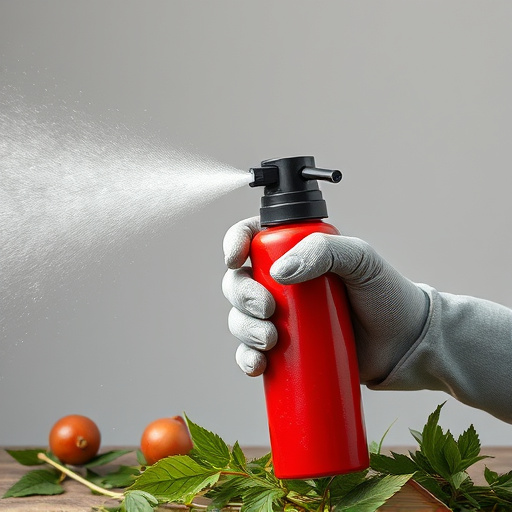Pepper spray, a crowd control tool using capsaicin from chili peppers, irritates eyes and respiratory systems for 20 minutes to an hour, with symptoms including tearing, coughing, and burning sensation. Recovery times range from hours to days, depending on concentration and individual sensitivity. Police must strategically deploy pepper spray, targeting eyes, nose, and mouth while maintaining distance, to ensure crowd control without lasting harm, understanding its effects typically last a few minutes.
In recent years, pepper spray has emerged as a primary tool in police crowd control tactics. This article delves into the active ingredients of pepper spray and their potent effects on the human body. We explore the duration of exposure and recovery times, providing insights into how long pepper spray’s impact can last. Additionally, we offer best practices for police officers to ensure responsible and effective use during crowd control situations, emphasizing the importance of understanding the dynamics of these powerful chemical agents.
- Pepper Spray: Active Ingredients and Their Effects
- Duration of Pepper Spray Exposure and Recovery Time
- Best Practices for Police in Crowd Control Situations
Pepper Spray: Active Ingredients and Their Effects
Pepper spray, a common crowd control tool employed by law enforcement, contains capsaicin, the active ingredient derived from chili peppers. When sprayed, capsaicin irritates the eyes and respiratory system, causing temporary disability and disorientation in individuals exposed. The effects can last anywhere from 20 minutes to an hour, depending on the concentration of capsaicin and the individual’s tolerance. During this period, those affected experience tearing, coughing, difficulty breathing, and a burning sensation. While pepper spray is designed as a non-lethal method, its potency can significantly disrupt crowds and allow police to gain control or apprehend individuals in volatile situations.
Duration of Pepper Spray Exposure and Recovery Time
The duration of pepper spray exposure and recovery time can vary significantly depending on several factors, including the concentration of capsaicin (the active ingredient), the method of deployment, and individual differences in sensitivity. Typically, the effects of pepper spray can last from 2 to 15 minutes, with some variations reporting up to 30 minutes. During this period, individuals may experience difficulty breathing, coughing, chest tightness, tears, redness, and pain in the eyes, face, and throat.
Recovery time is generally quicker for mild exposures but can take several days for more severe cases. Symptoms usually subside within a few hours for most people, but those with pre-existing respiratory conditions or other health issues may require medical attention. Proper decontamination, which involves thorough rinsing of the eyes, skin, and any clothing affected by pepper spray, is crucial to expedite recovery and prevent further irritation or potential chemical burns.
Best Practices for Police in Crowd Control Situations
In crowd control situations, police officers must adhere to best practices to ensure safety and minimize harm. Firstly, they should assess the situation and determine the appropriate level of force required. This often involves a combination of non-lethal weapons, such as pepper spray, and de-escalation tactics. When using pepper spray, it’s crucial to target the eyes, nose, and mouth of individuals while maintaining a safe distance to avoid accidental inhalation by officers or bystanders.
Understanding how long pepper spray effects last is vital for effective crowd control. The duration can vary based on factors like concentration, weather conditions, and individual sensitivity. Typically, the effects of pepper spray subside after a few minutes, allowing for the affected individuals to recover and disperse. Officers should be trained in monitoring these effects and providing medical aid if necessary, while also facilitating the safe dispersal of the crowd.
Police pepper spray, while a useful tool for crowd control, has significant effects that must be understood. The active ingredients can cause blindness, breathing difficulties, and intense pain for up to 15 minutes or more, depending on the concentration and exposure. Following best practices, such as using it only when necessary and ensuring proper training, is crucial to minimize harm. Understanding how long pepper spray effects last—and the lasting impact on individuals—is essential in maintaining public safety during crowd control situations.
